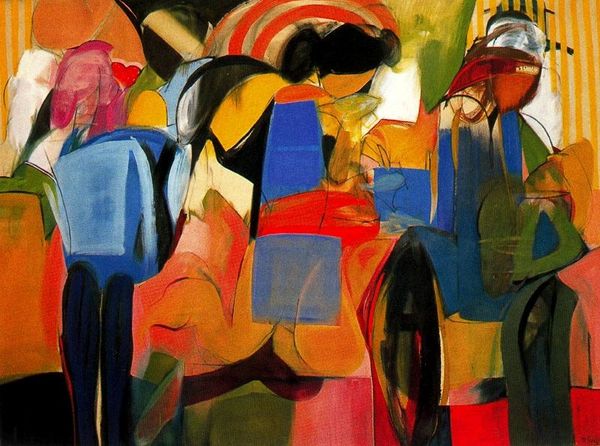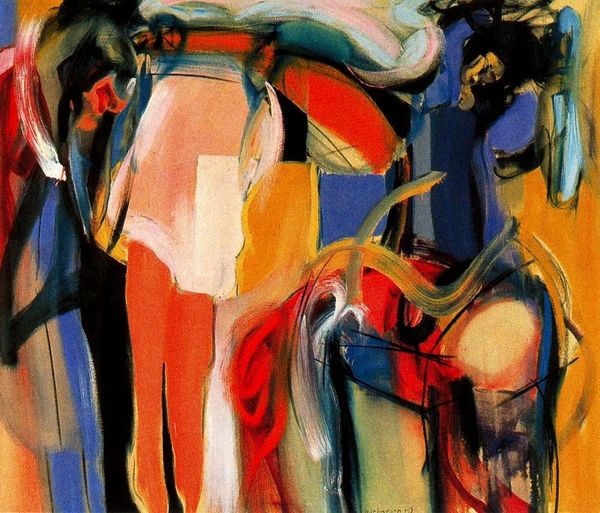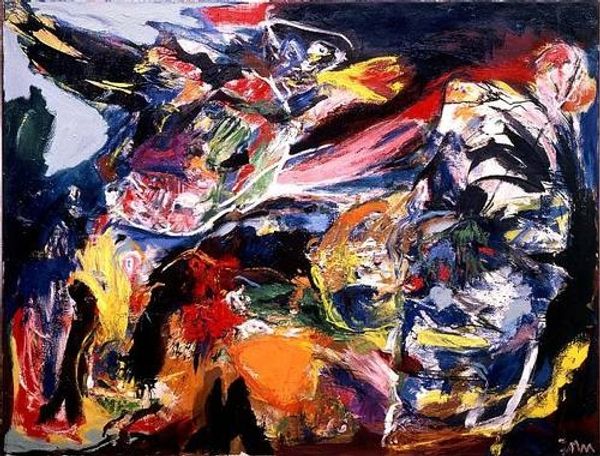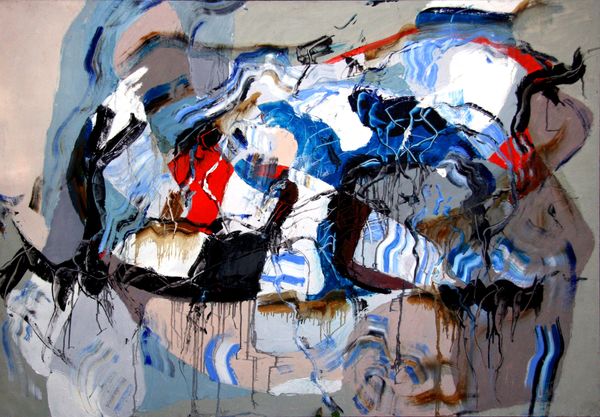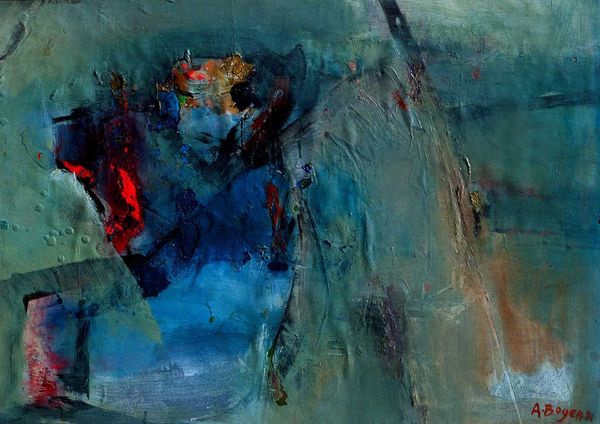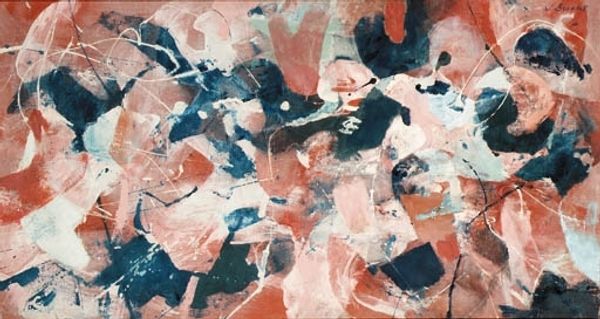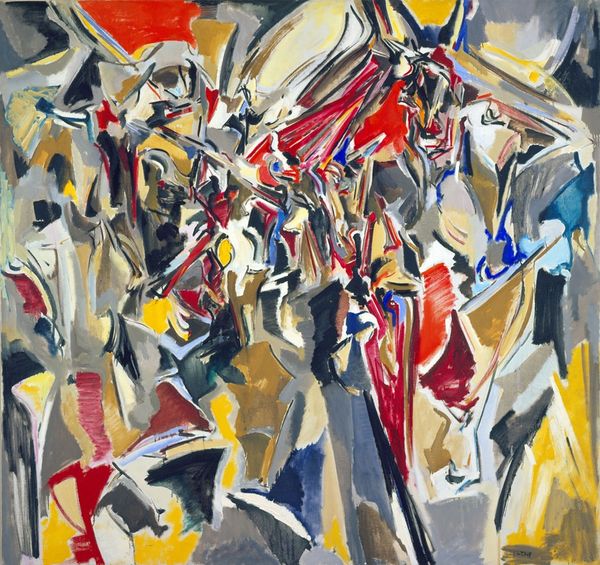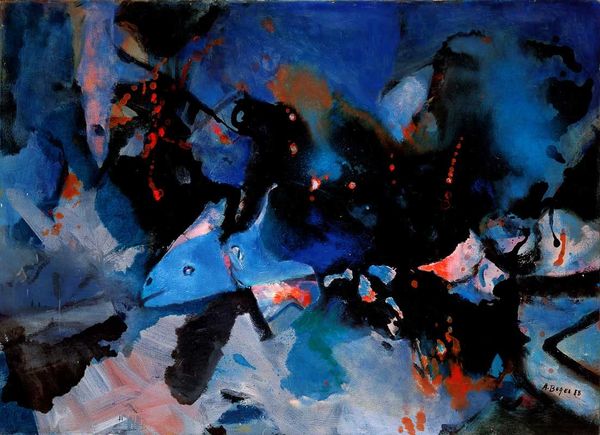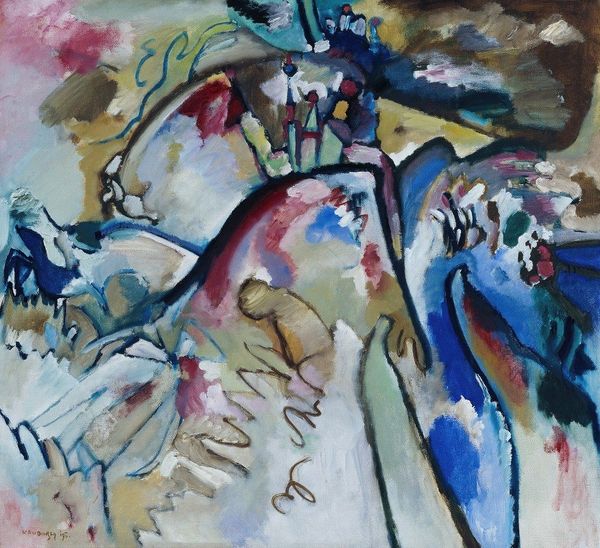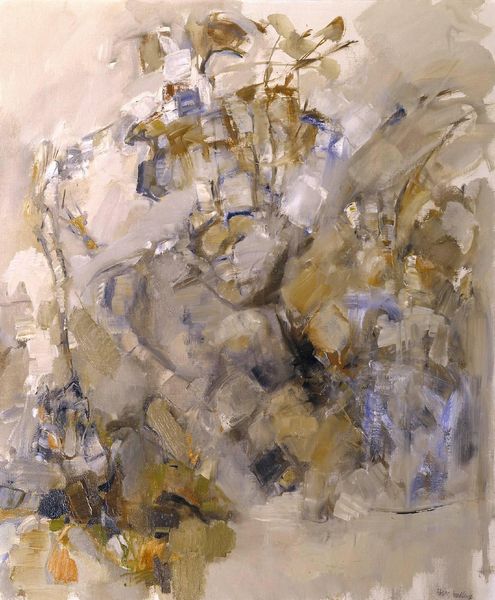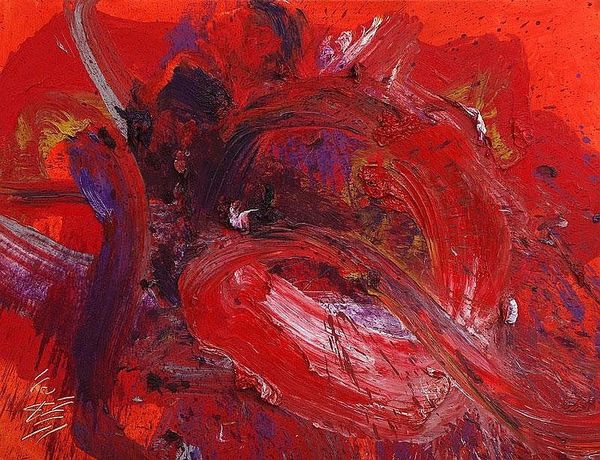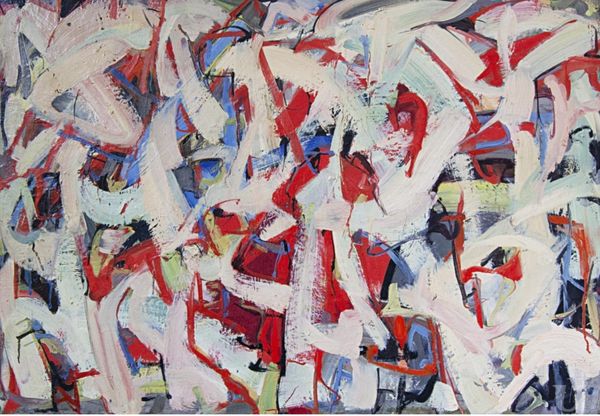
acrylic-paint
#
pattern-and-decoration
#
abstract-expressionism
#
abstract expressionism
#
colour-field-painting
#
acrylic-paint
#
abstraction
#
line
#
modernism
Copyright: Miriam Schapiro,Fair Use
Curator: This is "Fanfare," painted by Miriam Schapiro in 1968. You can see she used acrylic paint to bring this work to life. Editor: It's like an explosion of color and form! I'm immediately drawn to the vibrant reds and blues wrestling for dominance on the canvas. It feels dynamic, almost musical, in its chaotic arrangement. Curator: The title itself suggests that – "Fanfare". I think it's important to note the context in which Schapiro was working at the time. As a woman artist navigating a male-dominated art world, she, along with other artists, were investigating new artistic modes of expression through Pattern and Decoration which championed aspects like craft that had previously been regarded as "low art". Editor: And you can see the influence of Abstract Expressionism here, that embracing of gesture and feeling... yet pushing against its established boundaries through materiality, almost challenging its inherent seriousness? How do you read that choice of acrylic? Curator: Acrylic, particularly in the '60s, represents a move towards a more democratized art production. It allowed for quick, bold application, rejecting the slow, careful layering of oil paint. Also, we must think of this transition as a shift from traditional ideas of art as exceptional, something requiring specialist materials and years of training, to something readily produced, accessed and even integrated into commercial and design worlds. Schapiro was exploring this blurring of boundaries. Editor: So, by choosing a "common" material, was Schapiro rejecting notions around the preciousness or high art of painting? Creating works with materials associated with domestic craft challenged its institutional framing? Curator: Precisely. In many ways this speaks to an exploration of identity that moved beyond the grand gestures favored by many male abstract expressionists. Acrylic paint enabled her experimentation and this created opportunities for other artists outside of this cannon to use new techniques to push for new artistic definitions. Editor: Looking at it again, it's like these colorful forms are battling to come forward—almost reflecting socio-political battles as well as aesthetic ones? Curator: Absolutely. Considering Schapiro's dedication to a broader and more socially representative artistic canon allows us to perceive that a radical potential can often be located in these kinds of explorations into domestic environments. Editor: That’s fascinating! It definitely shifts how I see it, giving so much more context. Curator: For me as well! Bringing social and production analysis like this gives us such insights into its initial meaning and potential social role at the time of its making.
Comments
No comments
Be the first to comment and join the conversation on the ultimate creative platform.
